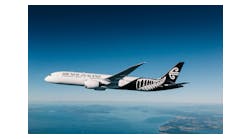The Arab world needs to increase the number of secondary airports and remove protectionist measures that shield national airlines, the CEO of Air Arabia, the Middle East's largest discount carrier said."Most of the secondary airports with a few exceptions, they're actually more expensive than the primary airports to operate to," Adel Ali said in an interview with Arabian Business."They cost more in handling, landing, the fuel cost is higher and that's one of the policies that gets applied to protect the national carriers who operate from the main airport and also to protect the domestic market. Therefore they make the secondary airport much more expensive to discourage people from travelling to."In Europe a key element to consider for budget carriers has been secondary airports and avoiding head to head competition at airports where big full service airlines fly to, landing fees and associated infrastructure costs are high. EasyJet and Ryanair are able operate to and from airports that may be as much as 30 miles outside a city centre where the likes of Lufthansa, British Airways, Air France wouldn't.That has largely been possible because Europe has 130 secondary airports and because military airfields were converted or privatized. In the Arab world there are about 20 secondary airports, and in many instances according to Ali they're more expensive than primary facilities."There has to be a complete change in the aero-political requirement that exists," Ali said.
"There are still airports in the Arab world that don't open their airports for low cost businesses...Unless agreements get implemented to have a true open sky in the Arab world there is no point in having new players or lots of planes. There needs to be lots of secondary airports, primary airport infrastructure improved, in addition to open skies."Air Arabia, the Middle East's largest discount carrier, carried 5.3m passengers, achieved a 82 percent load factor and posted a net profit of $116m, in 2012, a 55 percent gain from the previous year. Based on current market conditions and trajectory Ali believes the airline could post annual growth rates of 25 percent over the coming five years compared with an annual aggregate of 15 percent since the carrier's inception in 2003. "We are not living in a normal part of the world, it's a very moving part of the world the results of which optimistically should develop the business," Ali said. By 2015, the Sharjah-based carrier should have a fleet of 55 planes compared with a fleet of 32 planes at the moment. Competitors like Kuwaiti rival Jazeera Airways reported a 2012 net profit of $49.3m last year carrying just over a million passengers, while Dubai government-controlled Flydubai record a profit of $41m and carried over 5m people.Last month the International Air Transport Association (IATA) said the outlook for the financial performance of the global aviation industry for 2013 had improved on the back of expected stronger revenues. The Geneva based organization now expects airlines to produce a combined net post-tax profit margin of 1.6 percent and a net post-tax profit of $10.6bn (up from the previously projected $8.4 bn).Airlines in the Middle East are expected to post a profit of $1.4bn, a 55 percent increase from 2012. The region's performance fares better European carriers by about 75 percent this year, 133 percent more than rivals in Latin America and far outpaces African carriers forecast to only post a $100m profit in 2013. Only Asia and North America outperform the Arab world.Arab airlines are expected to add 12.8 percent in capacity in 2013 and this will be outpaced by demand growth of 13.7 percent, according to IATA.
Copyright 2013 ArabianBusiness.com - ITP Digital Ltd.Provided by Syndigate.info, an Albawaba.com companyAll Rights Reserved





